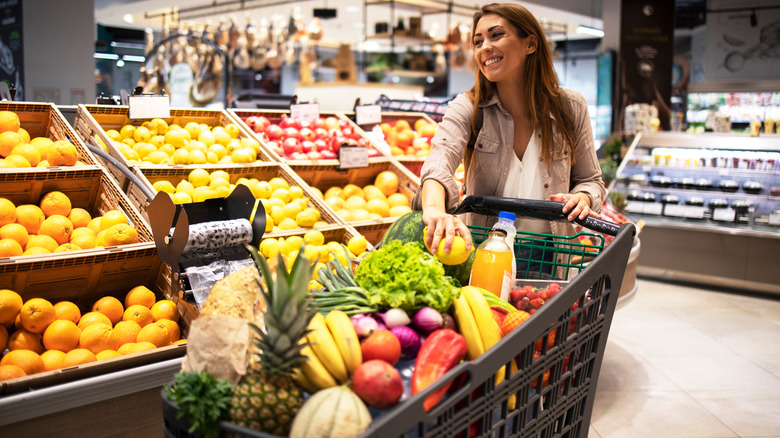Grocery Carts Have Gotten Bigger So You'll Buy More Things
When we go to the grocery store, we don't typically think a lot about our shopping cart. Sure, we may spend a few seconds deciding whether we need a large cart, a small cart, or a handheld basket, but after the decision's made, we never give it another thought. That said, there are people who have spent a lot of time thinking about grocery carts: the people who design them and the stores that provide them.
Of course, we take carts for granted now, but we didn't always have them. Priceonomics ties the invention of the grocery cart to the development of refrigeration and preservatives; before we had a way to dependably keep things from going bad, we simply bought less at a time, relying on handheld baskets since we didn't have to lug as much home. Designing grocery carts wasn't as simple as you might expect, though, and neither was figuring out where to place carts in stores, persuading people to use carts in the first place, or getting folks to return them after loading their groceries into their cars.
By 2016, however, there were more than 25 million shopping carts in U.S. grocery stores alone, though their design has changed from the way inventor Sylvan Goldman first conceived them in one very important way: Grocery carts are considerably larger than they used to be.
Do people really buy more with larger grocery carts?
The grocery cart's whole reason for existence is to encourage people to buy more than they can carry. So what happens when you increase the size of the cart? People buy more in order to fill it. In fact, marketing consultant Martin Lindstrom told "Today" that when the size of the cart doubled between 2009 and 2011, people bought 40% more stuff.
However, the connection between shopping cart size and grocery store bills isn't new. A New York Times article from 1975 quotes a brochure for Unarco's U-Com-70 line of large-capacity carts, demonstrating that cart manufacturers and stores have been colluding to encourage consumers to consume more since the birth of the shopping cart: "Bigger capacity carts sell more groceries. Today's shopper actually wants to buy more. ... Shoppers should not be limited or discouraged by limited capacity carts."
Even Amazon's smart shopping carts, first launched in 2020, were redesigned in 2022 based on customer feedback. One of the "improvements"? Double the capacity.

